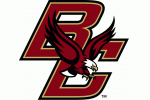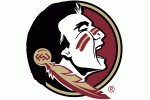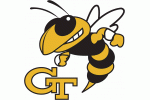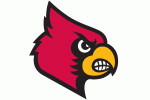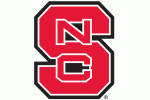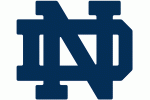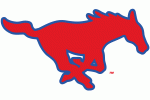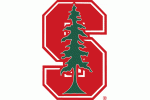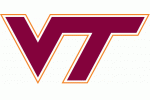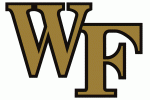With a third Notice of Allegations, UNC and the NCAA may be further than ever from a resolution.

By now you’ve likely heard that the NCAA issued a third Notice of Allegations to UNC. This amendment to the already amended notice of allegations, as far as anyone can tell, is unprecedented. The way it reportedly happened is even more perplexing. Trying to figure out what it all means for the future is a fool’s errand. But we’ll have some fun with it. I’m not sure the proper technical term (second ANOA?), so we’ll call it the AANOA.
What we (mostly) won’t do, is argue the merits of the case, or explain why certain allegations are true or untrue. That is a separate argument, and at this point most people’s opinions are not changing. However, based on a brief stint in college athletics and basic knowledge of NCAA rules, I will say the the 2nd Notice of Allegations was as accurate of an outcome as one should have reasonably expected. Unfortunately, this is the NCAA and it is clear that “reasonable” becomes a more distant memory with each passing day.
To get a detailed account of the actions that have brought us to this point, please read Greg Barnes’ article yesterday for Inside Carolina. He looks at actions taken by the Committee on Infractions (COI), and specifically takes aim at Greg Sankey - the SEC Commissioner and the Chairman of the COI. After reading it (click here) even if you have the most basic understanding of the NCAA and how it operates, it’s a fair argument that the NCAA has gone completely off-script.
Before we dive into some of the specifics, here’s a quick timeline of some key dates:
June 30, 2014- On the heels of the Wainstein Report’s release, NCAA reopens it’s investigation into UNC and its use of AFAM classes
May 20, 2015 -NCAA issues its first Notice of Allegations (NOA). UNC has 90 days to respond to the allegations.
August 14, 2015- UNC submits new information pertaining to Women’s Basketball and Men’s Soccer. This extends the timeline in which UNC was to respond to the original NOA.
April 25, 2016- UNC receives ANOA. This is a watered down version of the original NOA. Specifically, Men’s Basketball and Football are not named and the charge of impermissible benefits has been removed.
August 1, 2016- UNC responds to the ANOA. UNC questions the NCAA’s jurisdiction of the case as it pertains to UNC’s academic standards and procedures.
October 28, 2016- A rare “procedural” hearing is held in front of the COI in order to argue the feasibility of the NCAA’s jurisdiction. This was supposed to be different from arguing the actual merits of the ANOA, which would be discussed at a subsequent hearing.
December 13, 2016- NCAA issues a third Notice of Allegations (AANOA). This largely reverts back to the original NOA, and once again specifically names men’s basketball and football. It also reintroduces the impermissible benefit allegations.
What is in the third Notice Of Allegations?
The easy answer is that it is just a rehashed version of the first NOA. However, there are a few important bits of information that were added.
First, the timeline of the now extends to 2002 instead of 2006, which is a significant development. If player ineligibility is proven, then the 2005 NCAA basketball title becomes a viable target for any potential sanctions. More on that below.
Additionally, UNC’s athletic department, Deborah Crowder and Dr. Julius Nyang’oro have been accused of a deeper level of collaboration than in previous iterations. Specifically, all parties leveraged their relationship for the sole purpose of providing impermissible benefits, such as additional access to the AFAM classes, for the sole purpose of maintaining eligibility.
The third notice of allegations can be viewed in its entirety here.
What merit, if any, does the AANOA hold?
The quality and depth of the answer depends on what angle is used. Does it have merit based on NCAA protocols and procedures? Or does it have merit based on the actual facts of the case? As stated at the beginning, we want to avoid going down the rabbit holes of debating/rehashing the known facts. Not because they are unkind to UNC (if the NCAA follows its own rules, they are not), but because those have been available for some time now.
Unless new information is discovered, most opinions won’t change. If you did not believe the first NOA had merit, then the you definitely won’t think the third NOA does.
Fortunately, Greg Barnes also provided a clear, concise synopsis of the protocol issue. You can read that here. One of three arguments he touches on is that after the original NOA was released, UNC and the NCAA worked through all the allegations, specifically the issue of impermissible benefits.
Using NCAA Bylaw 16.3.1.1 as one of the basis for their arguments, UNC originally argued that using academic counselors was allowed. That bylaw states:
“Member institutions shall make general academic counseling and tutoring services to all student-athletes. Such counseling and tutoring services may be provided by the department of athletics or the institution's nonathletics student support services. In addition, an institution may finance other academic and support services that the institution, at its discretion, determines to be appropriate and necessary for the academic success of its student-athletes.”
Based on the evidence being used at that time, the NCAA agreed and backed off this allegation. Despite what some have portrayed, there was no known direct connection to the AFAM department by UNC athletic personnel that fell outside the parameters of those stated in the bylaws, with the possible exception of Jan Boxill. The NCAA stood firm on her actions.
That all seems pretty cut and dry. While understandably debatable, it is much more rational than any previous actions. It also was still more aggressive than anything involving similar, though not identical, cases at Auburn and Michigan. Google those when you take a break from your Wolfpack cousins this holiday season.
The stage was set for the “procedural” hearing in October, to discuss other protocol issues that UNC was challenging. That’s where all hell breaks loose.
How did we get here?
In order to explain how we got here, you have to understand the NCAA process. A quick primer:
- NCAA conducts investigation
- NCAA delivers Notice of Allegations, if violations are alleged to have happened
- Alleged violator has 90 days to respond to NOA.
- NCAA has 60 days to respond to that response
- A hearing with the COI is set, in order to argue the merits and possible punishments
- Findings and punishments are released.
- Possible appeals process.
In this instance, an additional step was added - a rare hearing with the COI to argue the jurisdiction of the NCAA. This was to be completely separate of the traditional COI hearing to discuss the merits of the case.
That hearing took place on October 28th.
According to Greg Barnes’, UNC was notified of this hearing on 26 September.
Officially, they gave UNC 32 days to prepare for the hearing. Unfortunately, according to NCAA rules, any documentation to be presented before the COI has to be submitted 30 days prior.
So, the NCAA gave UNC 48 hours to prepare documents for an unprecedented hearing, that is not part of their normal processes and protocols, and which UNC had not received a definitive time and date.
Not surprisingly, UNC did not meet that 30 day suspense. Therefore, most of the supporting documentation they wanted to present was not viewed during that hearing. Greg Sankey rejected its admission into the proceedings, using NCAA procedures and bylaws as his reasoning. As the Chairman of the COI he does have that authority.
The COI decided that without the documentation to challenge the NCAA’s jurisdiction and explain the process in arriving at the ANOA, then the original NOA was still viable.
In plain english, the COI refused to listen to UNC’s arguments because UNC did not submit the necessary information...but they were denied from submitting that very same information by the COI.
The fact that Mr. Sankey used NCAA bylaws to defend his position is at worst, infuriating, and at best, ironic.
Additionally, the COI encouraged the NCAA enforcement staff to submit a new NOA. In a typical hearing, the COI can introduce new allegations if new evidence is presented. However, this was not supposed to be a typical hearing and there was no new evidence....with one notable exception.
The COI decided to include the Wainstein report as “new” evidence, and most importantly, they determined that the interviews with Crowder and Nyang’oro were now admissible. That is, the NCAA now considers an outside independent investigation, in which there were no UNC or NCAA enforcement or compliance officials present, to be admissible in their process.
That is a blatant violation of NCAA bylaws, and is similar to the Freeh Report, used by the NCAA against Penn State University for the Jerry Sandusky tragedy. In doing so, the NCAA could now make the AANOA even more threatening than either of the previous two...despite absolutely zero “new” evidence.
To be fair, a main difference with that case was that the NCAA and Louis Freeh were found to have collaborated for that “independent” investigation.
For what it’s worth, the NCAA reversed course on all sanctions in that case, as they settled with PSU before the case every truly went to court. Unfortunately, PSU had to live through two years of sanctions before that was finalized.
The COI does have considerable latitude to operate within the scope of their duties and hearings they preside over. However, picking and choosing what bylaws they want to follow, in order to fit their narrative, cannot and should not be comforting to any NCAA member institution.
What’s the end game?
There appears to be no end in sight. Perhaps the NCAA/COI were angry over UNC’s heavy handed response to the ANOA. That’s a fair assumption as these issues are often highly political, and men in expensive suits have incredibly fragile egos. The NCAA is perceived to be enormously both petty and incompetent.
They cannot come across as soft on an issue that many people believe, rightly or wrongly, was institutionalized cheating. Yet, their bylaws truly don’t address the situation.
Honestly, from a public relations standpoint, it may be better for the NCAA to remain petty and incompetent. That means they at least tried to do something, even if they lose. Specifically if they lose outside of their own institution, like civil court. (I am not advocating for that action quite yet. I do acknowledge that it is an increasingly likely option at some point).
That also does not mean that this kind of overreaction and blatant disregard for their own bylaws was orchestrated. However, I don’t think its as far-fetched as some might.
Others will (and have) argue(d) that UNC should have handled the receipt of the ANOA with a softer tone. If they had, then this theoretically could almost be over. That is also a shortsighted view. If UNC had rolled over at that point, then it would have allowed the NCAA to simply overreach on another institution at a later date.
As Bubba Cunningham stated yesterday, “Just as they’re trying to hold us accountable to the membership, it’s our responsibility to hold them accountable to the membership as well. We all have to live by the bylaws and constitution that is part of this association.”
The two sides will continue to dance and exchange their lawyer’s contact information.
However, the most alarming thing that stood out was the change in the timeline. By giving a new starting date of 2002, the 2005 men’s basketball title is now a legitimate target to be vacated. In fact, this has the feel of specifically targeting that championship banner.
2002 is the year that the majority of that 2005 starting five stepped on campus. If the NCAA makes the case the entirety of those student-athletes’ academic careers fall short of eligibility requirements, then that endangers that entire 2005 season.
That is different than, say, a certain small forward making the Dean’s List during the spring of his junior year despite claiming he never went to class. That spring semester actually had zero impact on his eligibility. But, wipe out that player’s sophomore year, and now his entire junior year, and thus his eligibility, is questionable.
I won’t speculate on the likelihood of that actually happening. However, it is now officially, and rather noticeably, back on the table. That should not be flippantly dismissed.
Also, it officially puts the beginning of the scandal firmly in the Matt Doherty era. So. Take that for what it’s worth. That’s probably a hot take for a different day.
What’s Next?
The short answer is UNC has 90 more days to respond and NCAA has 60 more days to respond to that response. Then, maybe, an actual hearing with the COI. At least, that’s how it is supposed to go. As the NCAA has demonstrated, they do not care about following their own protocols if those protocols are an inconvenience.
Theoretically it is even possible (though not likely) the NCAA and UNC go back and forth and arrive at the same conclusion as they did with the ANOA. It took 11 months to hammer out that agreement, but only took the NCAA two months to reintroduce “new” evidence. The lawyers will talk. Though, likely emboldened by the COI, the enforcement staff will be less likely to collaborate.
Trying to make a guess, no matter how educated it may be, is a waste of time. It’s clear the COI and the enforcement staff have dangerously blurred the lines of their duties and responsibilities. The NCAA, as best anybody can tell, is in unchartered waters. It will be on UNC to navigate through the obstacles. Any honest willingness to work together seems to have officially passed.
In the meantime, the dark cloud has reappeared over Chapel Hill and UNC will continue to do what they have done. Compete in Final Fours (six in 2016), win Coastal Championships in football, and continue to move forward. If they piss off a few N.C. State fans along the way, even better.
What more can they do?
This article was originally published at http://tarheelblog.com (an SB Nation blog). If you are interested in sharing your website's content with SCACCHoops.com, Contact Us.


